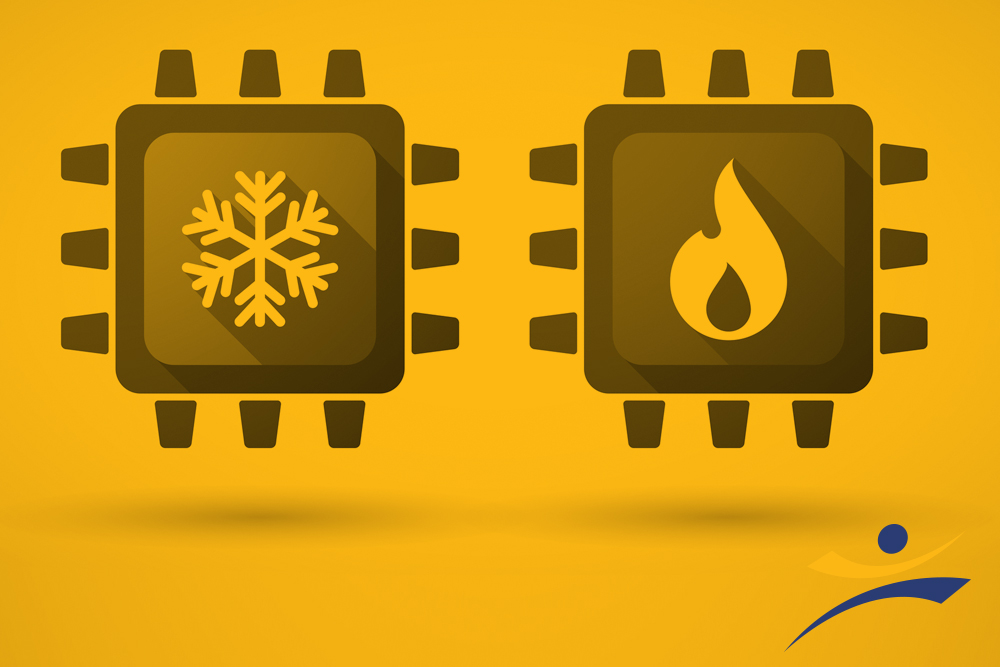
Ask an Orthopedic Series #AskAnOrtho
Question: When should I use hot vs. cold therapy for an injury?
Both hot and cold therapies can help to reduce pain from a muscle or joint injury, but deciding which course of treatment to take can be more than a little bit confusing! At The Central Orthopedic Group, we recognize that different injury types will require different treatments to heal properly, and choosing the wrong treatment could set your injury back even further. The following information can help you decide which temperature-associated therapy is appropriate for you.
Heat Therapy Thermotherapy
Applying heat to an injury will open blood vessels, which increases the blood flow to reduce your pain. Administering heat warms the affected area, thereby relaxing, soothing and loosening tight muscles, tendons and ligaments. Heat application is recommended for recurring discomfort from stiff joints or chronic muscle/joint pain.
How to Apply Heat
Here are examples of heat therapy that can be applied to alleviate muscle and joint pain. At The Central Orthopedic Group we always recommend consulting with a doctor to help determine which heat source is the best option for your injury.
- Hot Baths
- Heated Water Bottles
- Heating Pads
- Hot Tub
When and When Not to Apply Heat
Applying heat to aches and pains seems more comforting than applying ice. However for healing and recovery, there are certain times that it is beneficial to apply heat, as well as times that it can hinder recovery.
When to use heat
- Before activities the aggravate chronic injuries
- Before exercise to increase flexibility
- For sore muscles and joint pain; not as a result of an acute injury*
- When an injury is more than 2 days old
- Following 48 hours of icing an injury
When not to use heat
- Do not use on acute injuries*
- If injury is showing signs of swelling
- If you have poor circulation or diabetes
- Do not apply to open wounds or stitches
*An acute injury is one that has occurred within the last 48 hours.
Heating Tips:
- Heat application should not exceed 20 minutes, unless specified by your doctor or physical therapist.
- Never apply heat directly to your skin; instead wrap the heat source in a thin towel.
- Never use heat on an open wound or stitches.
- If you have diabetes or poor circulation, consult your physician before beginning a heat therapy regime.
Cold Therapy Cryotherapy
Typically cold therapy is used for newer injuries that are experiencing pain, swelling, inflammation and redness or bruising. Applying cold to an injury decreases blood flow circulation, which reduces the fluid buildup to the injured area. While ice therapy will relieve pain, the specialists at The Central Orthopedic Group would like to note that it does not treat an underlying injury, and you will want to follow-up with your physician should your symptoms worsen.
How to Apply Cold
Here are examples of cold therapy that can treat acute pain, inflammation, and sensitive injuries. The cold will slow the blood flow to the injured area and reduce swelling and pain.
- Ice Packs
- Gel Packs
- Ice Massage
- Bag of Frozen Veggies (we recommend frozen peas!)
When and When Not to Apply Cold
Ice following an injury can lessen pain and swelling. However there is a possibility of over-icing if you continue the process after 48 hours. This can slow the healing process. Swelling and pain is a natural reaction to your body healing itself. Even if ice is feeling good, that doesn’t necessarily mean it’s good for you!
When to use cold
- 24-48 Hours following an injury
- Use on sprains, strains, bumps and bruises
- For use on an acute injury*
- Use on swollen or inflamed injury
When not to use cold
- More than 48 hours following an injury; this can slow the healing process
- Ice can aggrevate stiffness and trigger points (often found in the neck and lower back)
*An acute injury is one that has occurred within the last 48 hours.
Icing Tips:
- Cold application should not exceed 20 minutes.
- Never apply cold directly to your skin; instead wrap the ice or ice pack in a thin towel.
- Do not use ice in areas where you have circulation issues; consult your physician before beginning a cold therapy regime.
- Follow icing for 24-48 hours with heat to soothe the pain.
While these are basic rules for thermo and cryotherapy applications, The Central Orthopedic Group stresses that you speak to a physician or physical therapist before beginning a heat or ice regime. Heat can make inflammation much worse, and ice can increase muscle tension and spasms. The last thing you want when seeking pain relief is to cause further damage and injury!
